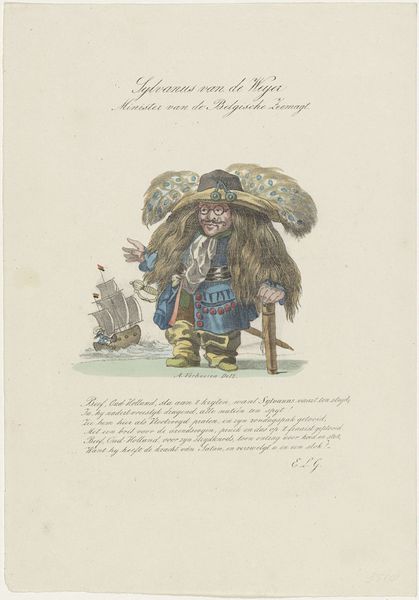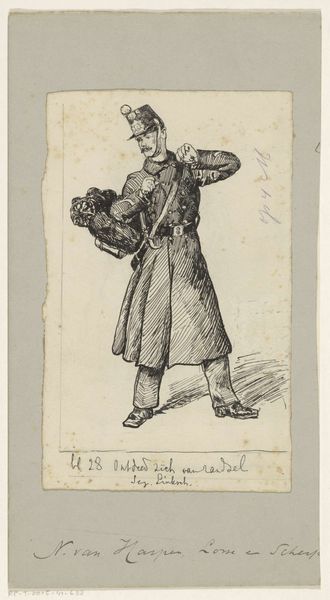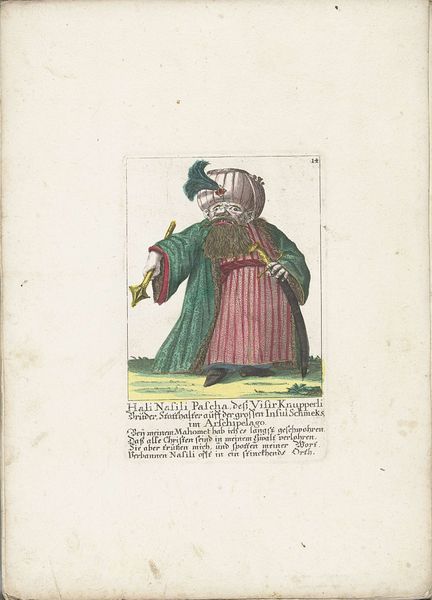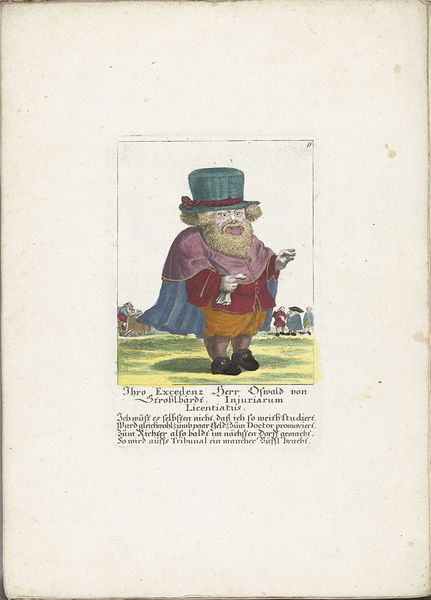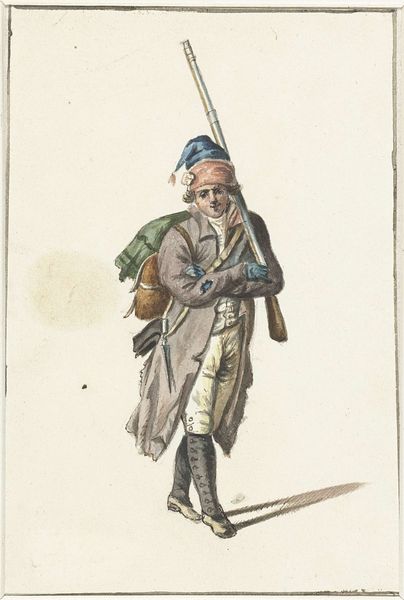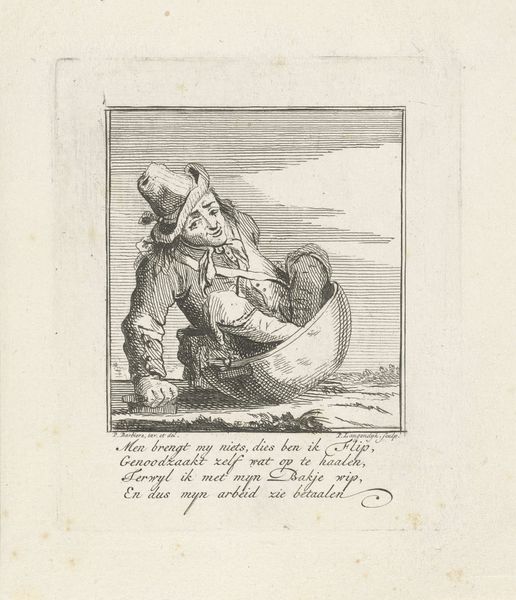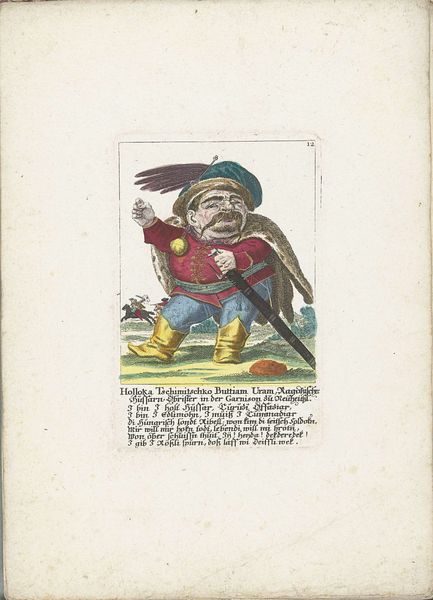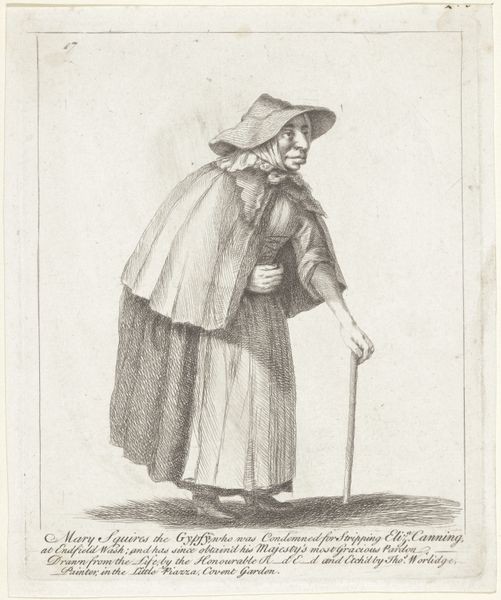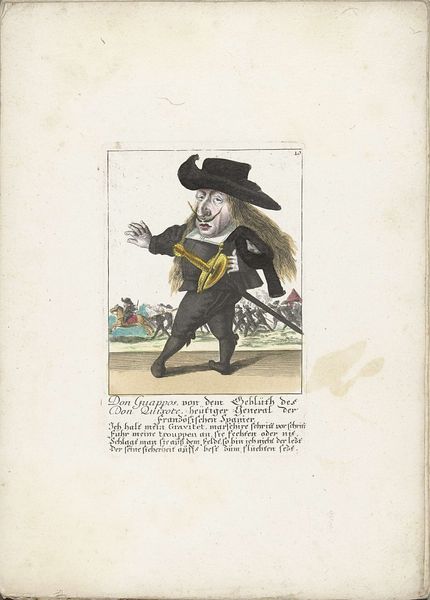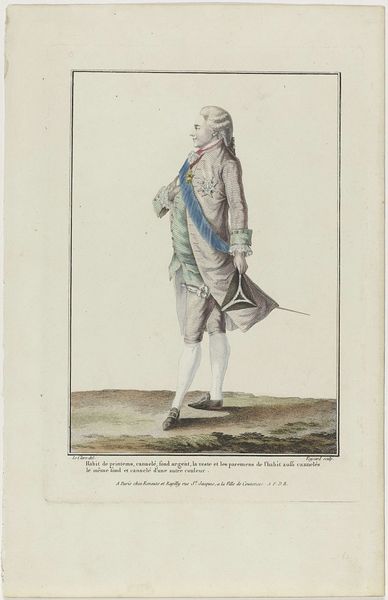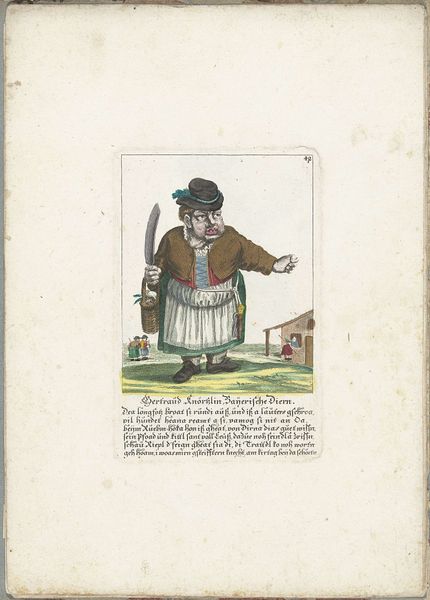
drawing, watercolor, pen
portrait
drawing
imaginative character sketch
quirky illustration
childish illustration
caricature
personal sketchbook
watercolor
romanticism
sketchbook drawing
pen
character design for animation
watercolour illustration
storyboard and sketchbook work
cartoon carciture
sketchbook art
Dimensions: height 265 mm, width 185 mm
Copyright: Rijks Museum: Open Domain
Editor: This is a satirical watercolor drawing titled "Spotprent op Charles Rogier," made around 1830 by Albertus Verhoesen. It depicts a rather… unique character. There's a definite element of caricature, with exaggerated features. I'm curious about the context of this work. How should we interpret this political cartoon? Curator: Well, to understand this caricature, we need to consider the sociopolitical climate of the 1830s. Charles Rogier was a prominent figure in the Belgian Revolution. Cartoons like this one weren't just simple drawings; they were powerful tools for shaping public opinion and, quite frankly, attacking reputations. Do you notice how Verhoesen uses the figure's posture to emphasize certain… less flattering aspects? Editor: Yes, his short stature and that very prominent nose! And he seems to be presenting a document. Is that meant to symbolize something specific? Curator: Absolutely. The document he's holding, combined with his smug expression, suggests a critique of his political maneuvers. Remember, visual satire often uses exaggeration to highlight perceived flaws. Who was the piece intended for? Editor: I would think a general audience already skeptical of Rogier’s politics would be more easily convinced through caricature. Curator: Precisely! Consider where this piece was displayed, how it was circulated – maybe in pamphlets or prints. The museum context gives it a different meaning today than it had back then as a readily disseminated piece of social criticism. Editor: I never really thought about art as a method of critique. Seeing it as something distributed to reinforce existing biases makes a lot of sense. I'm starting to see this piece as less of a historical portrait and more of a pointed commentary! Curator: It’s about unearthing the social narratives behind what appears to be just an image.
Comments
No comments
Be the first to comment and join the conversation on the ultimate creative platform.
